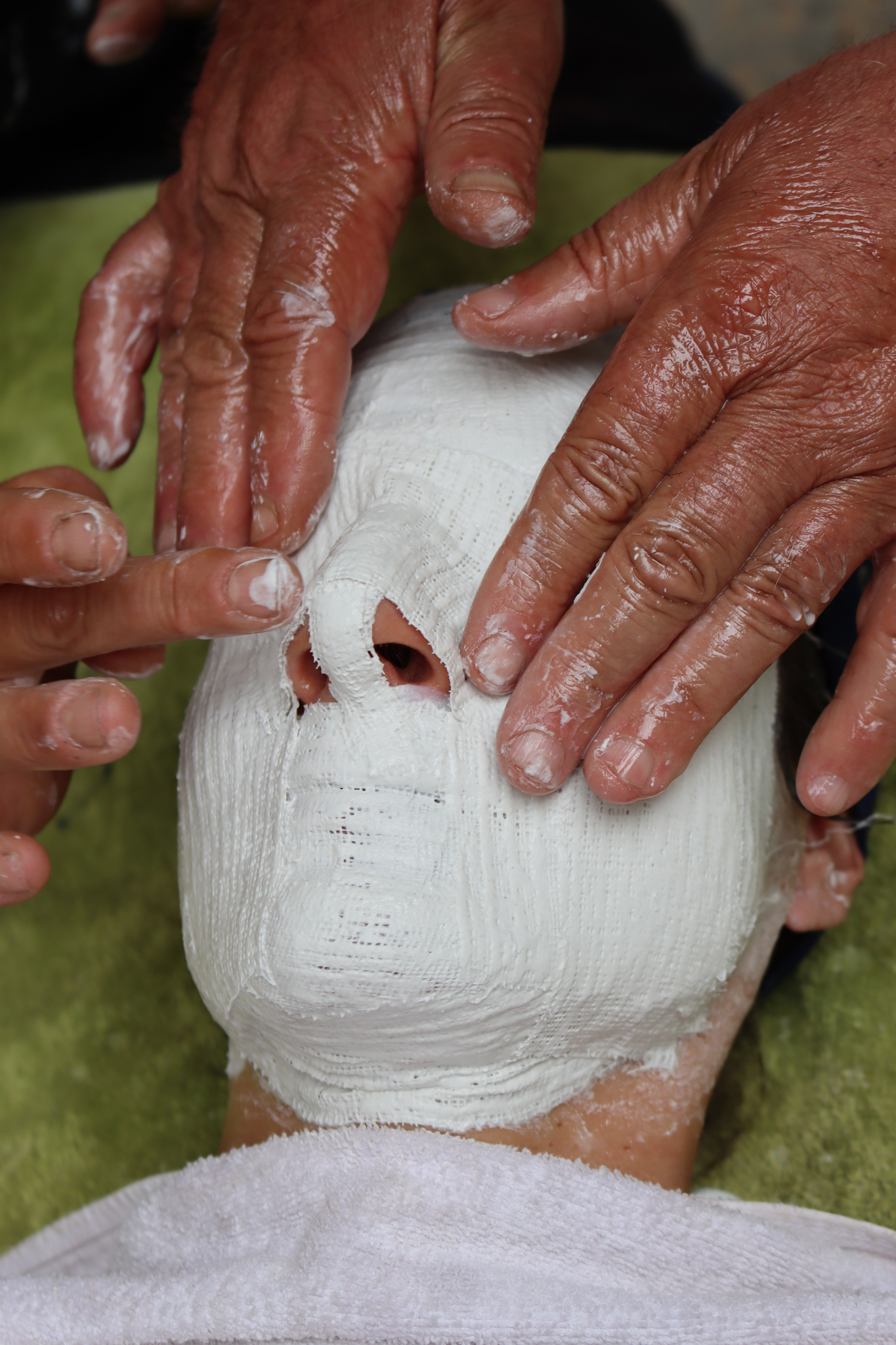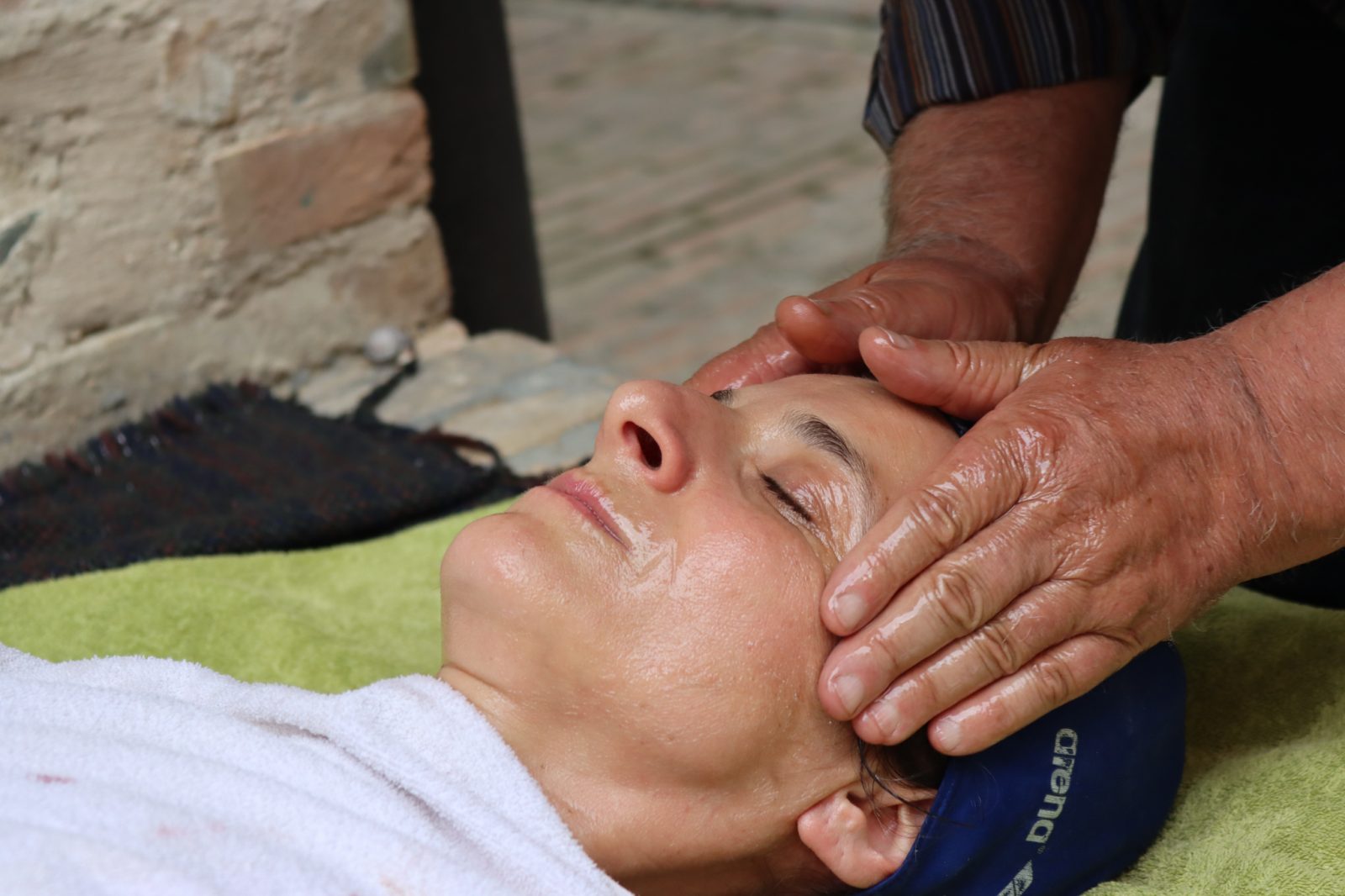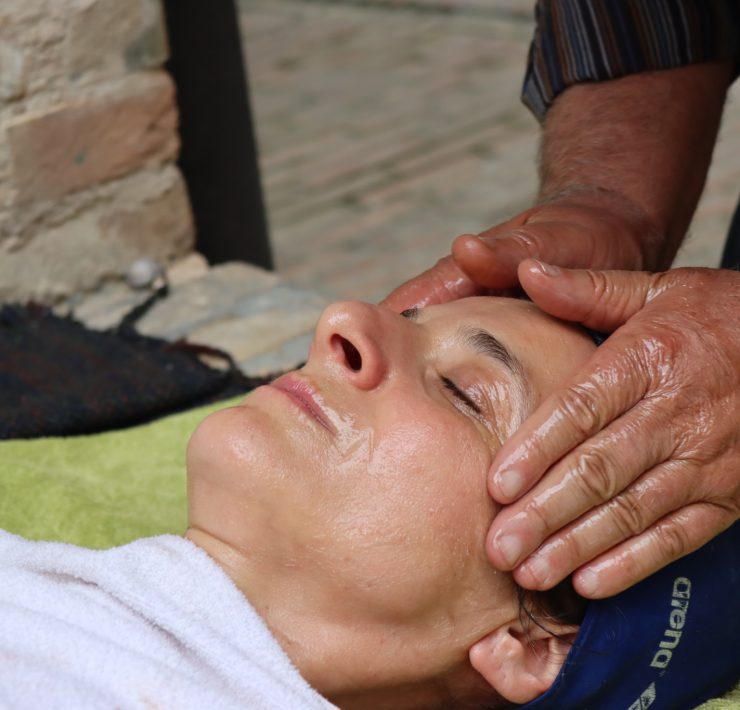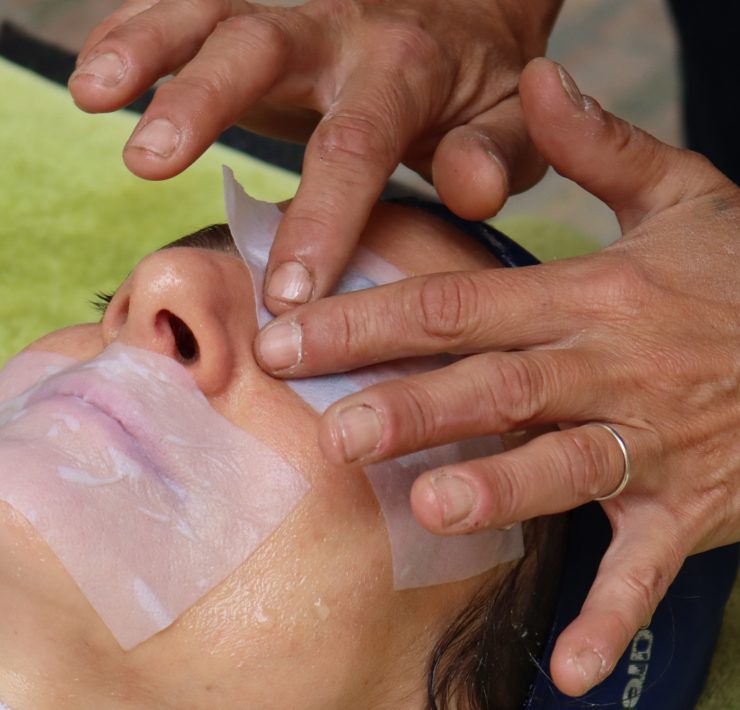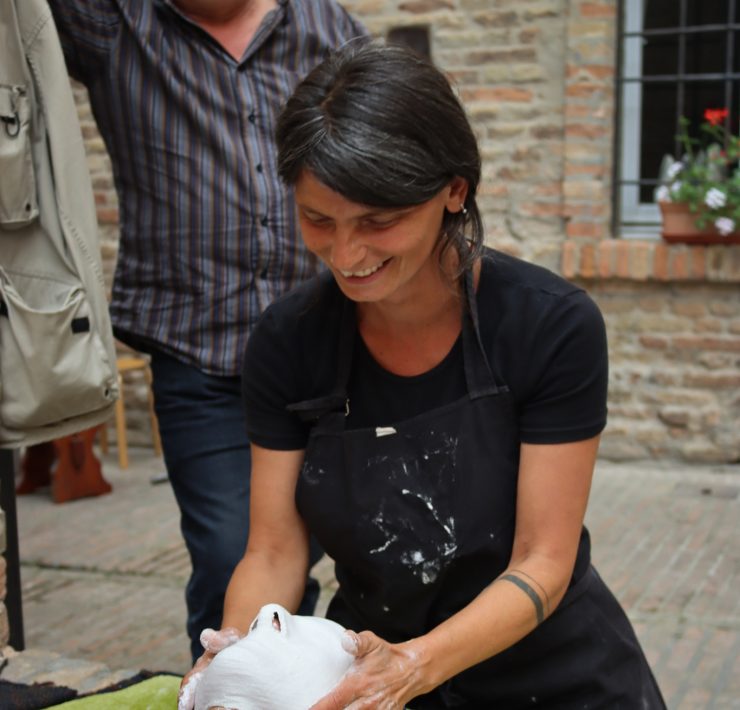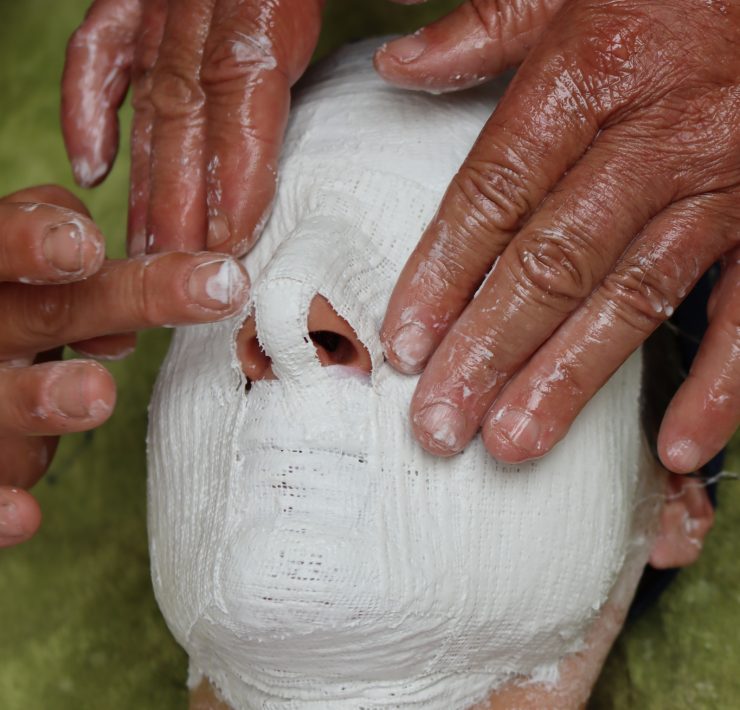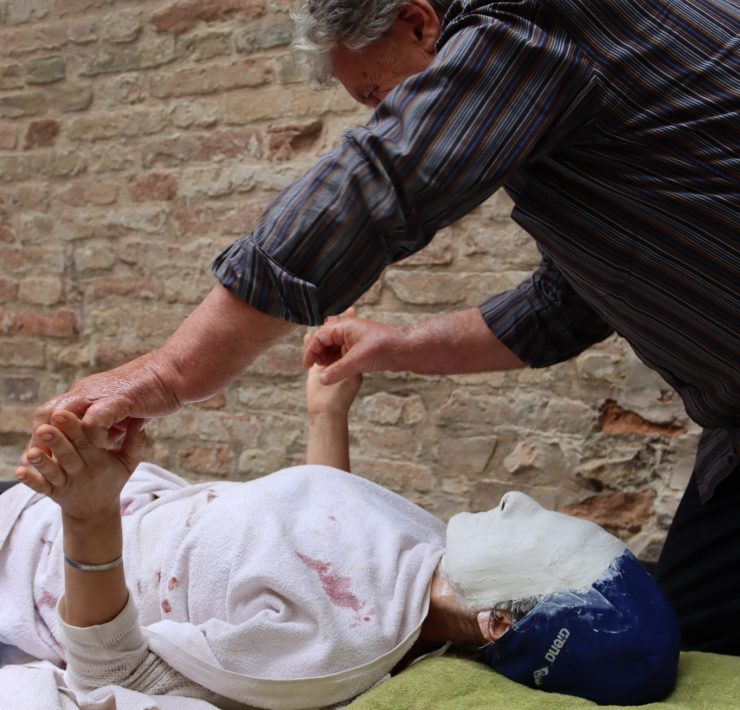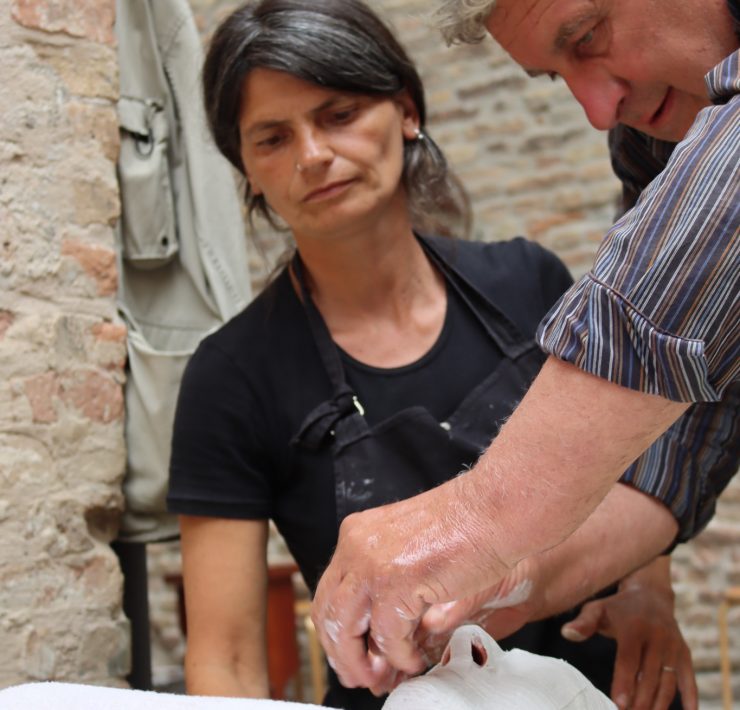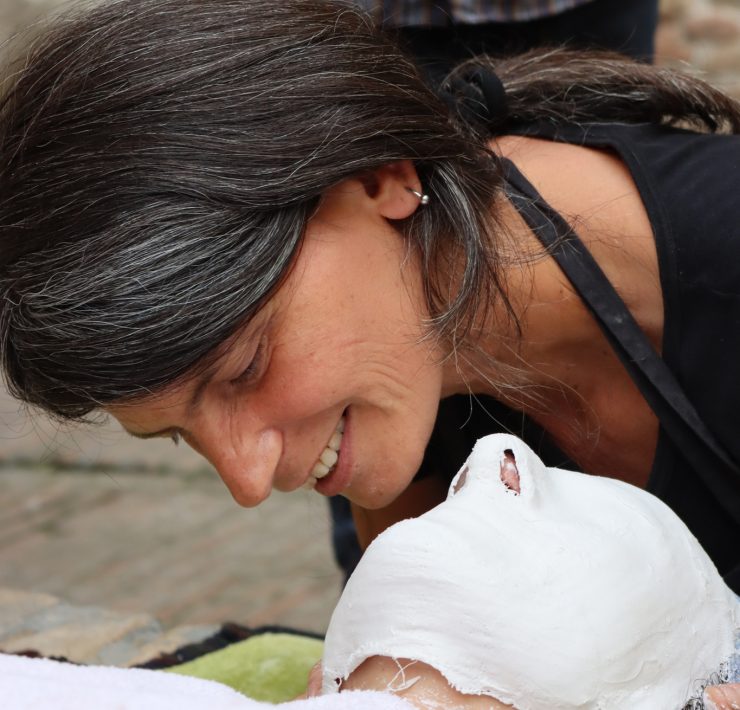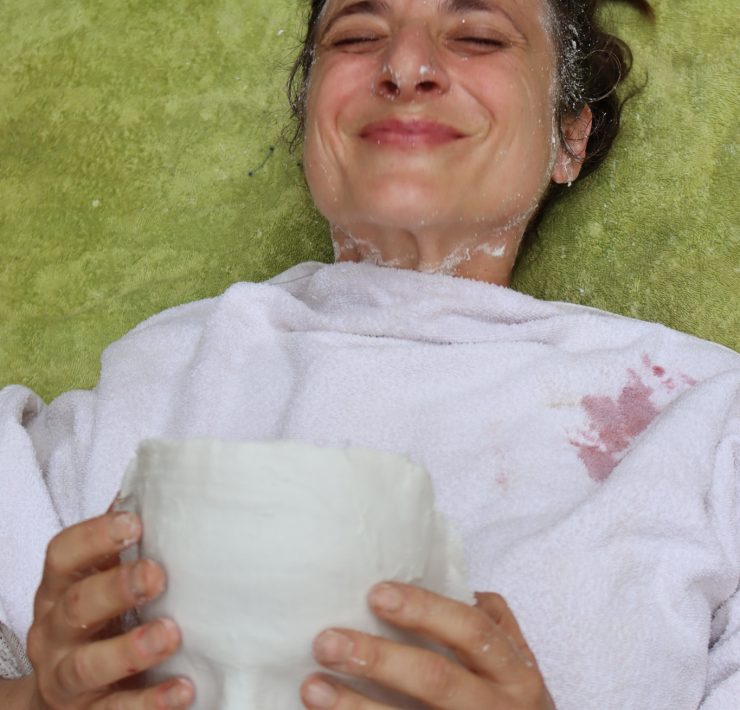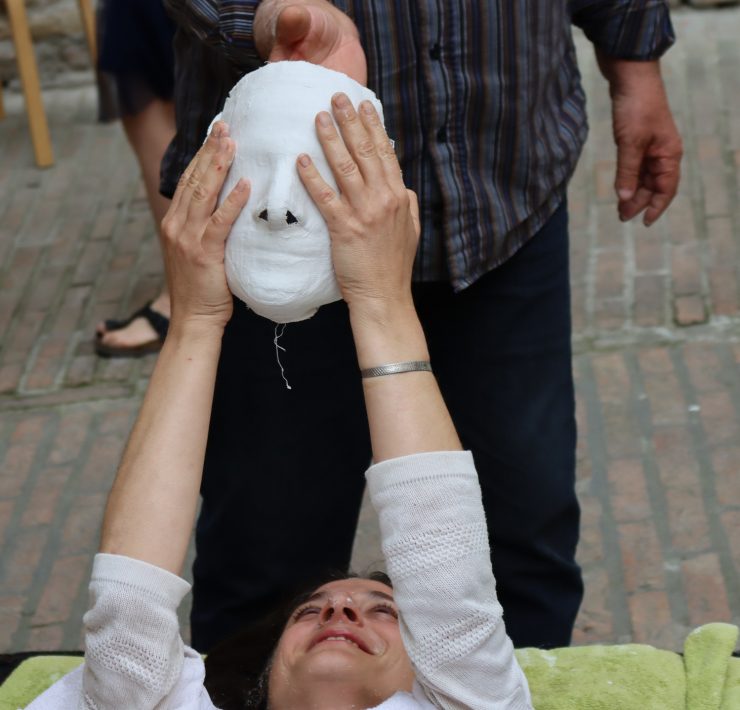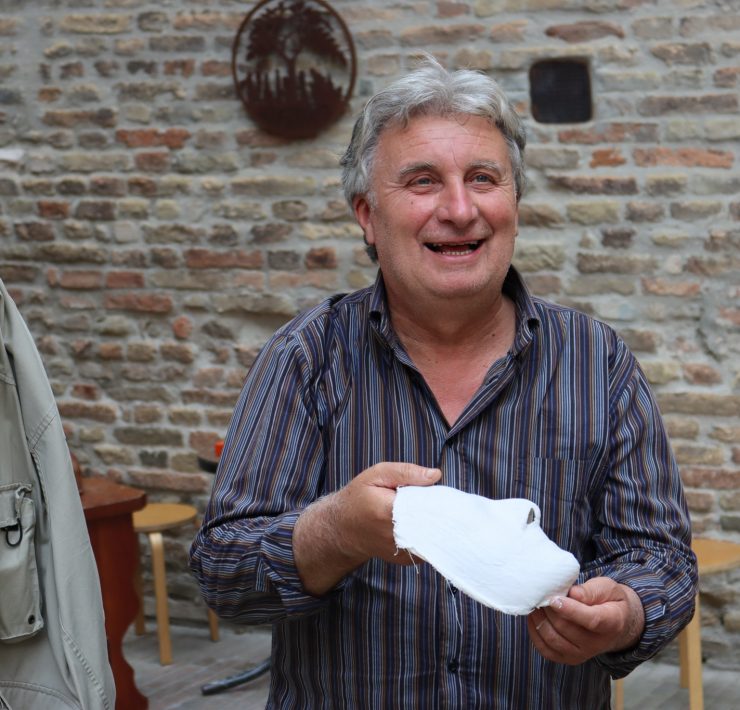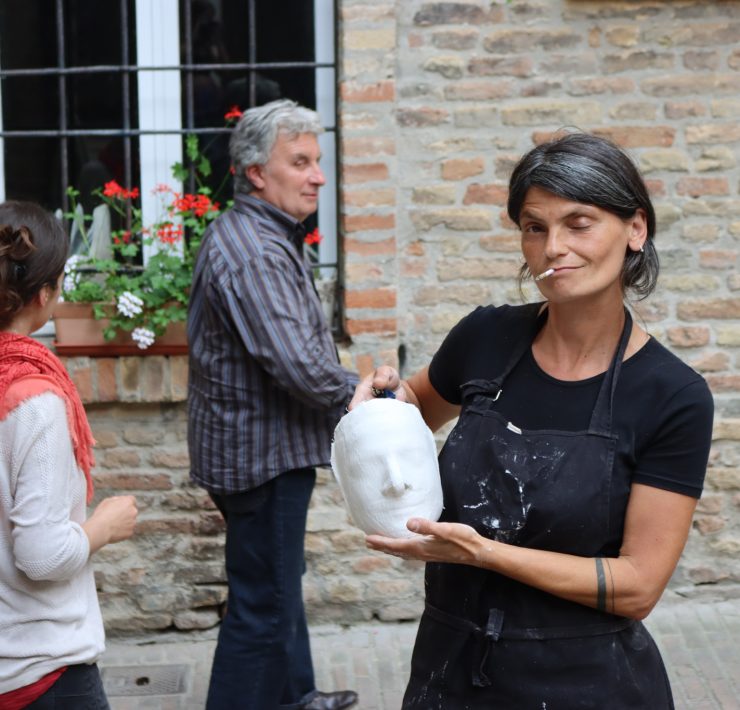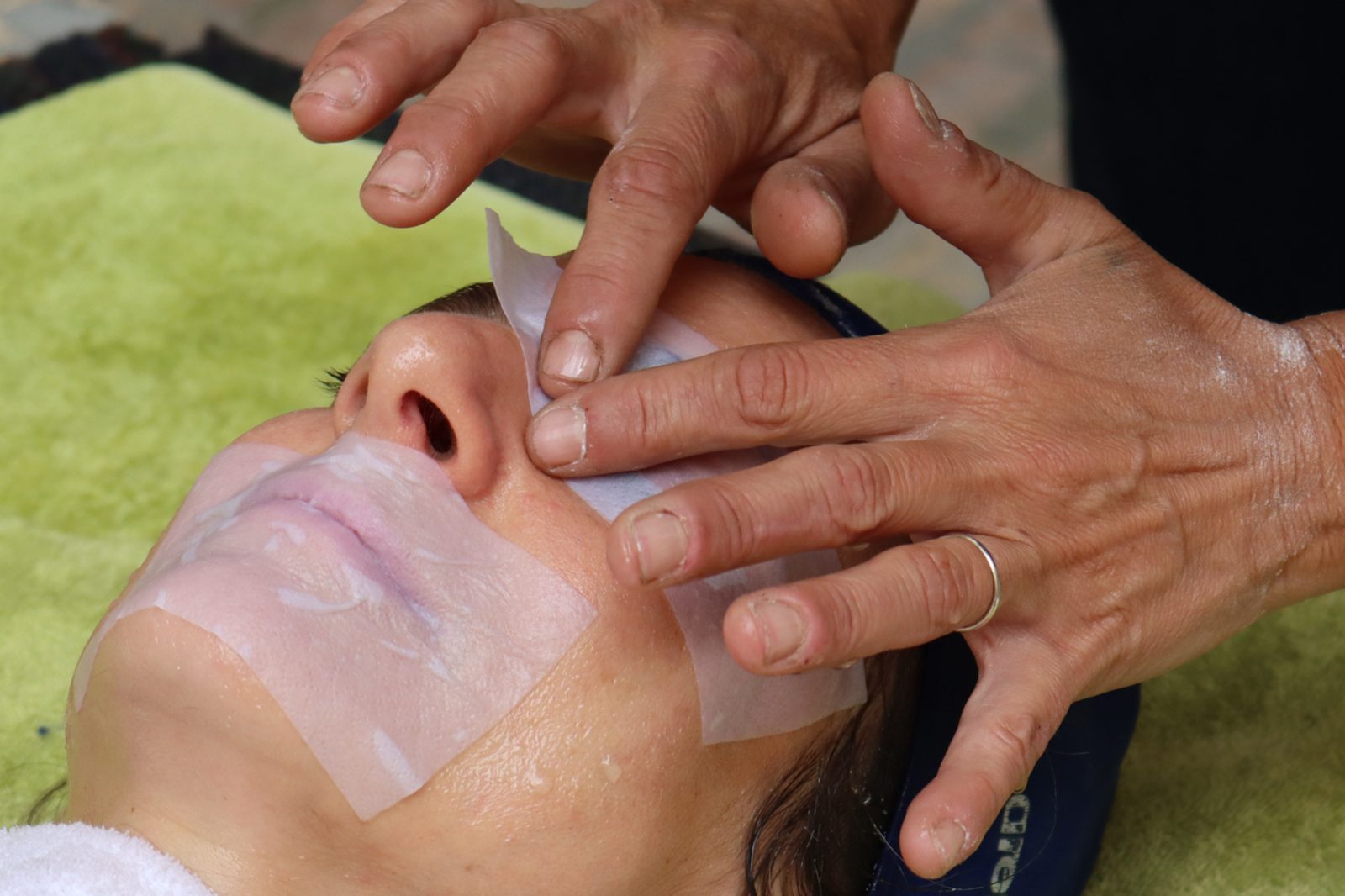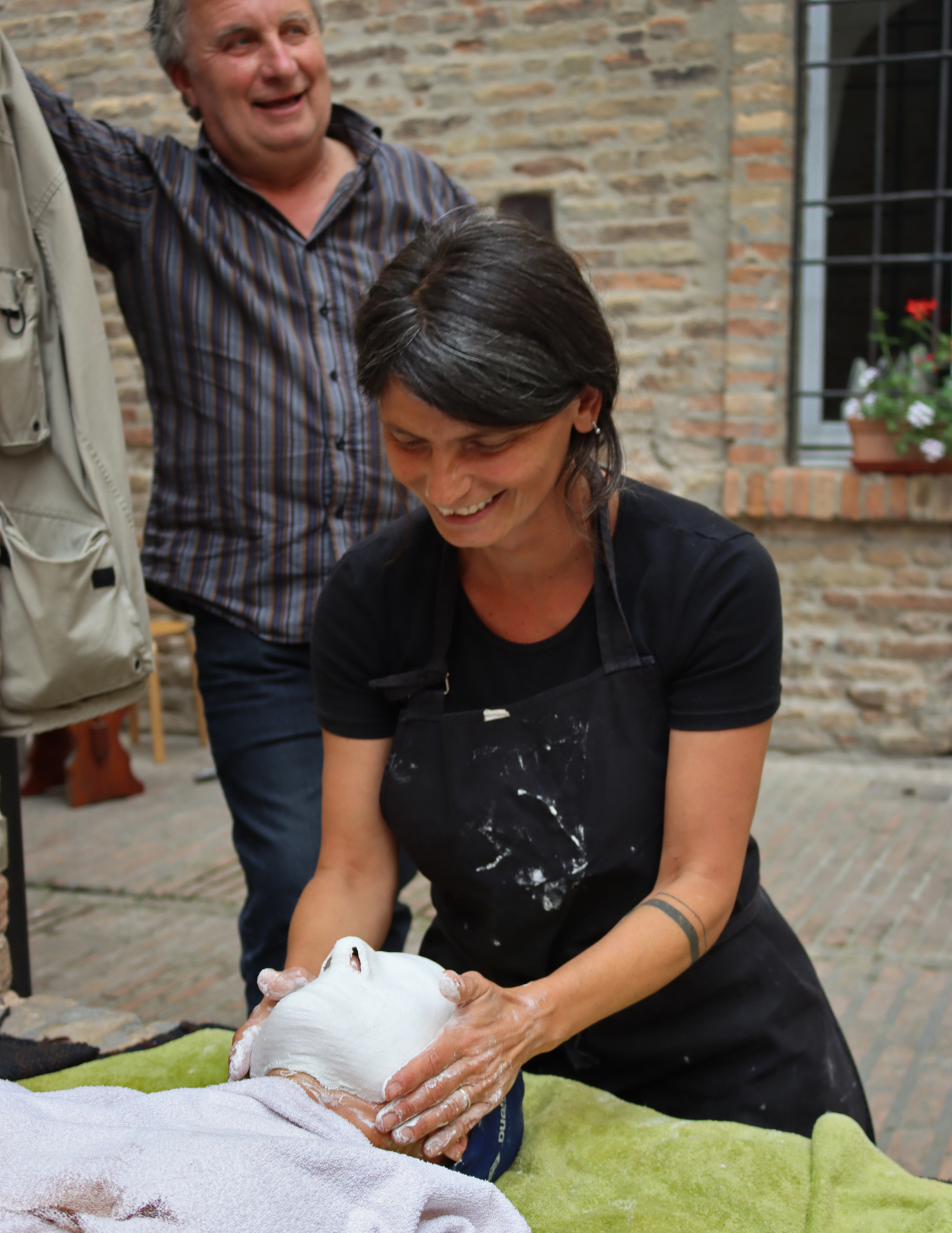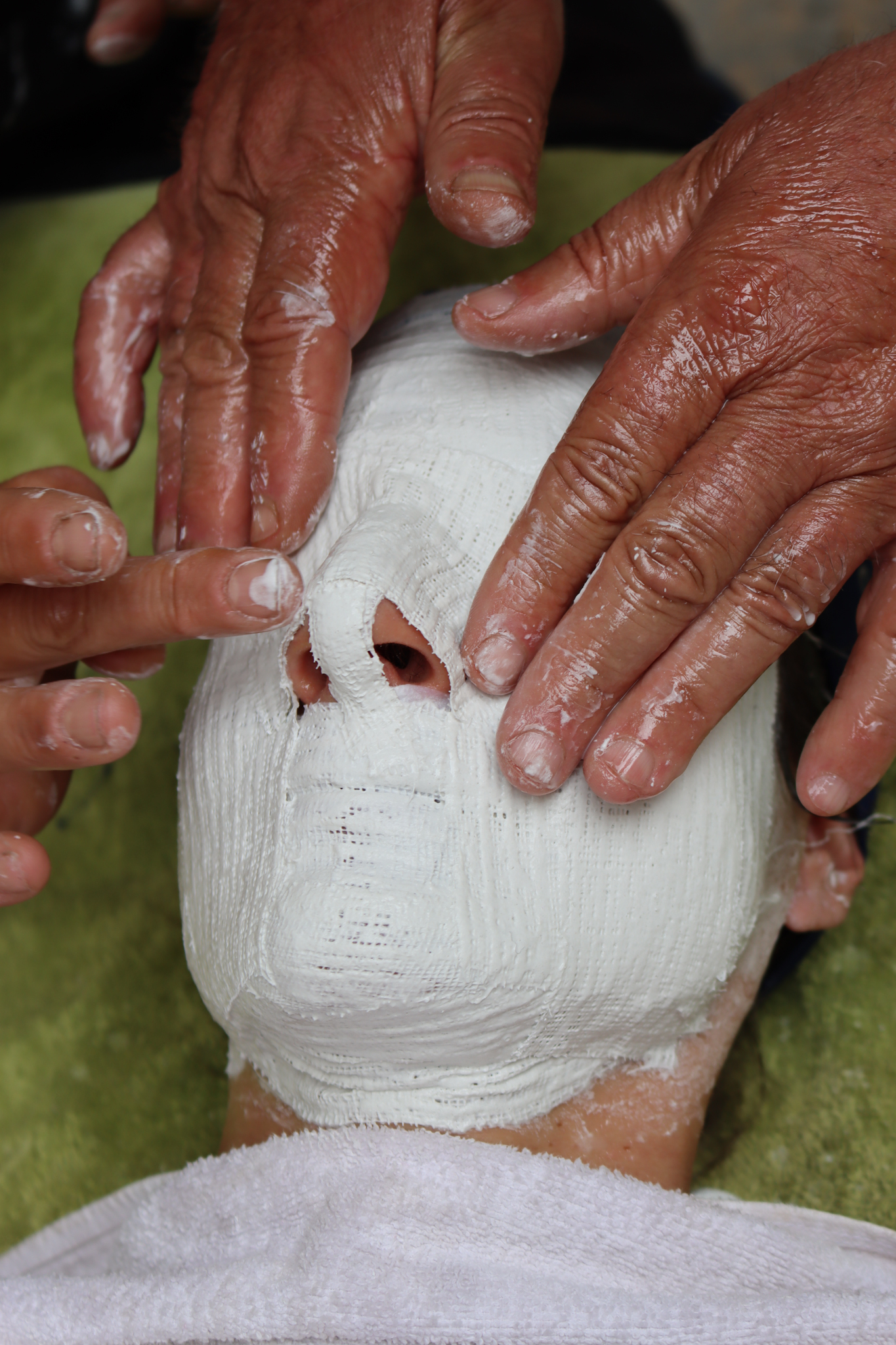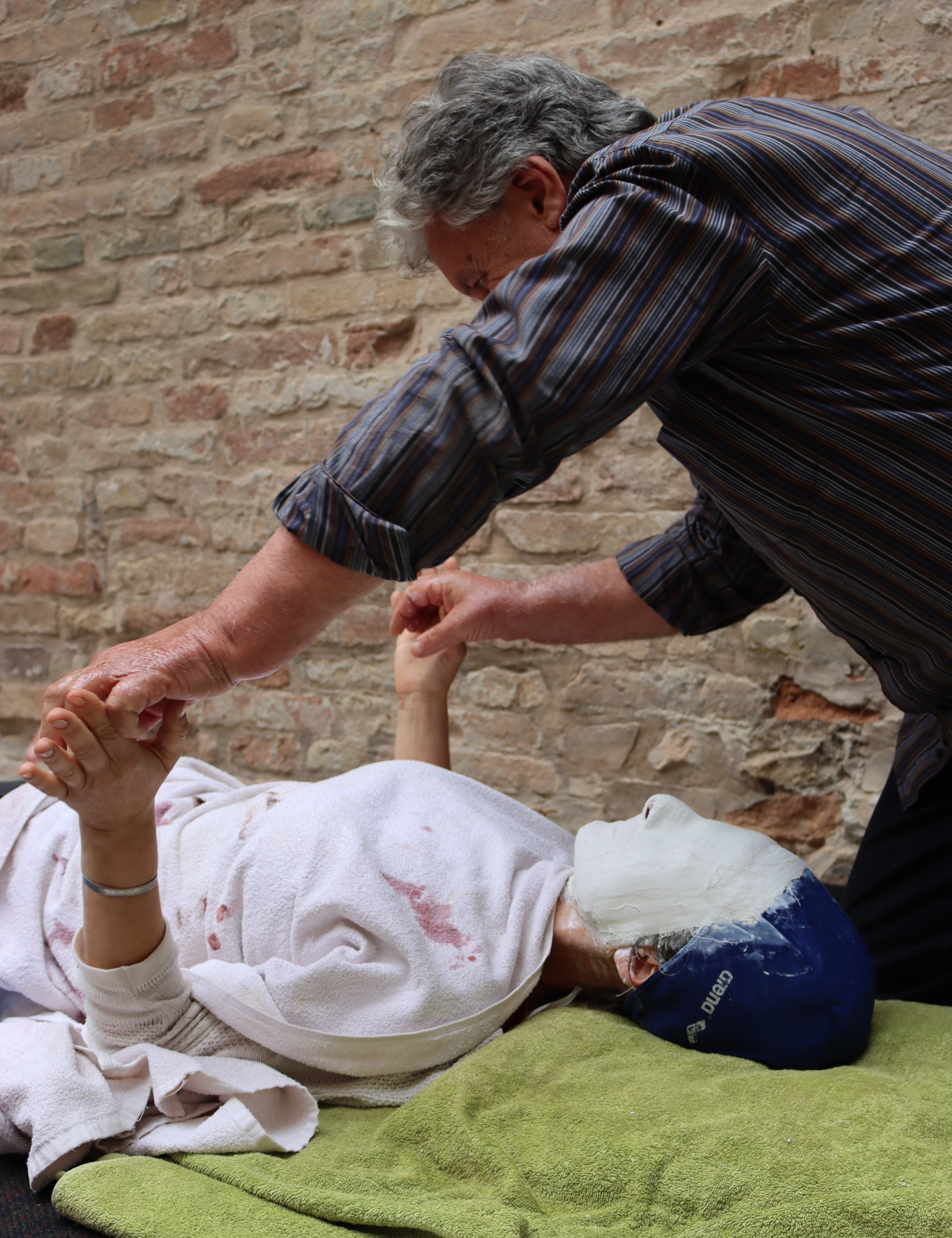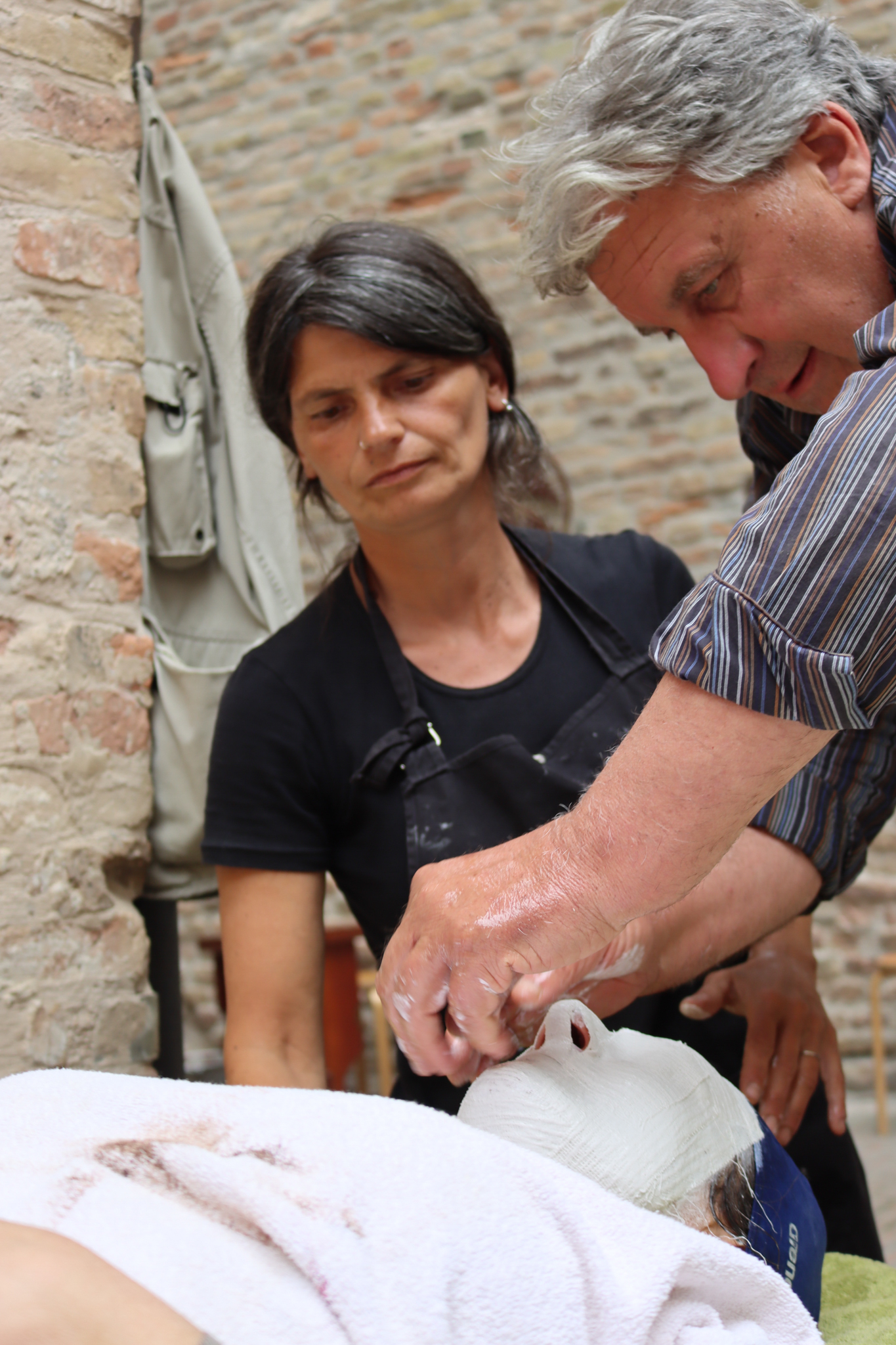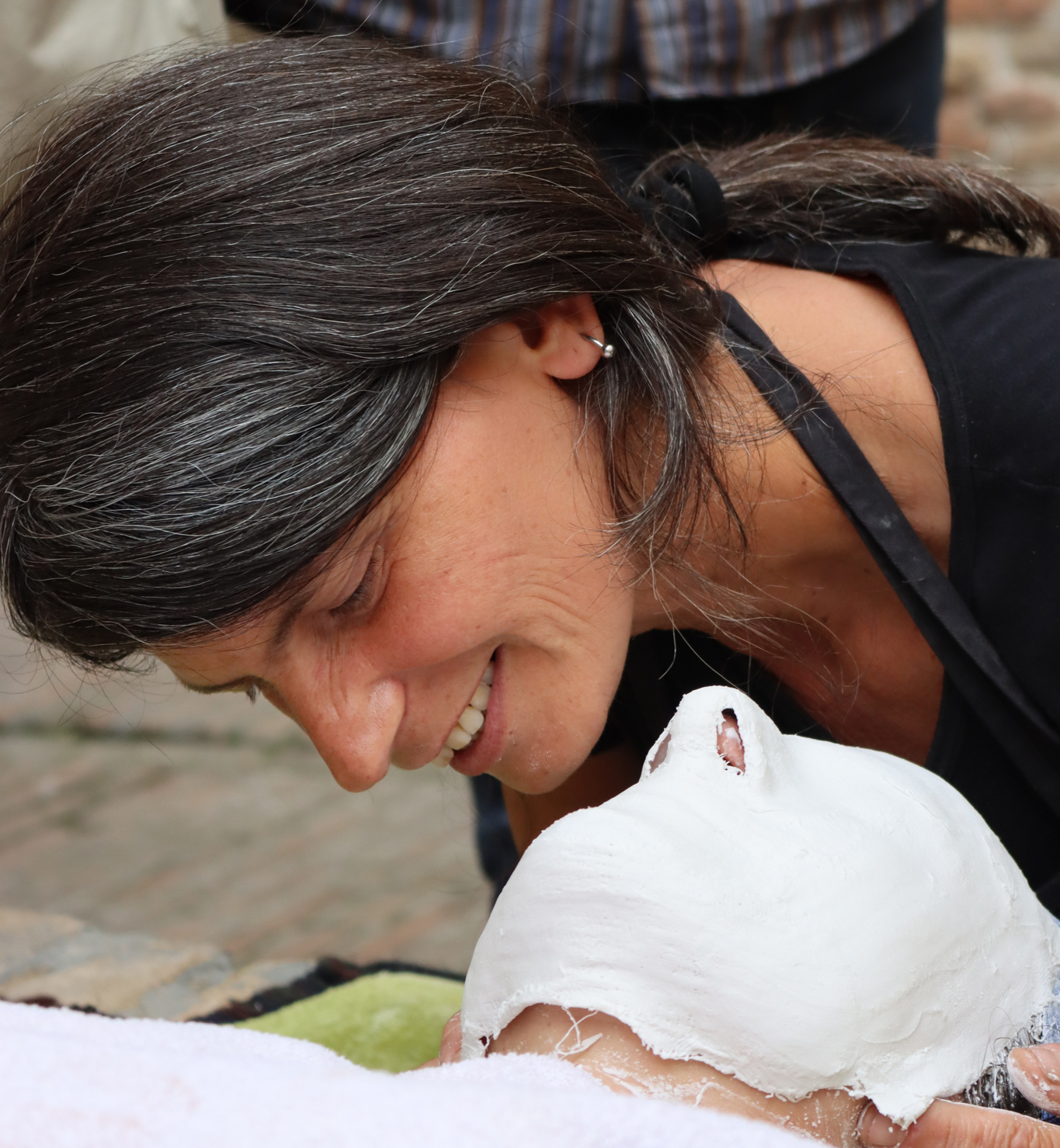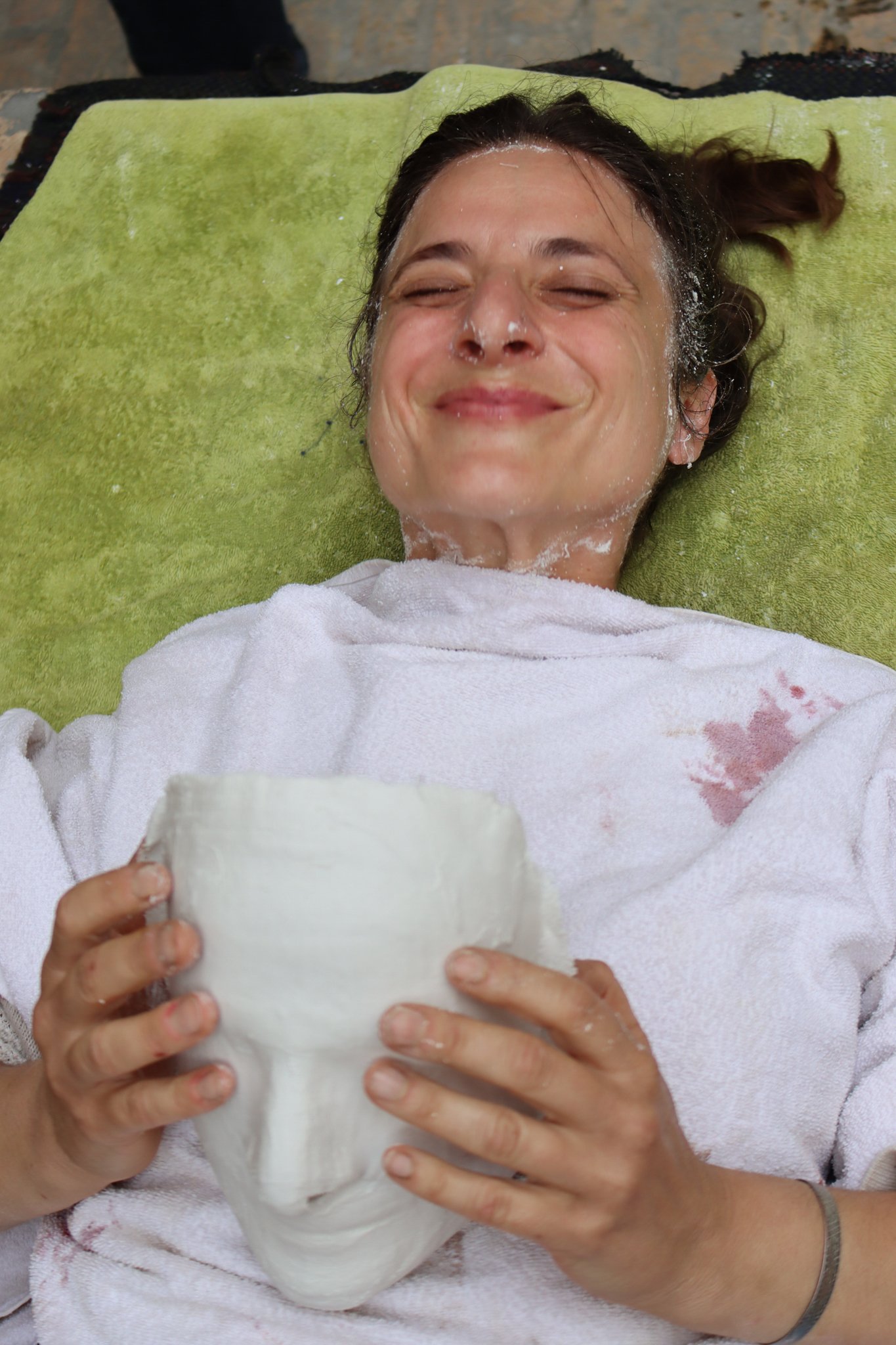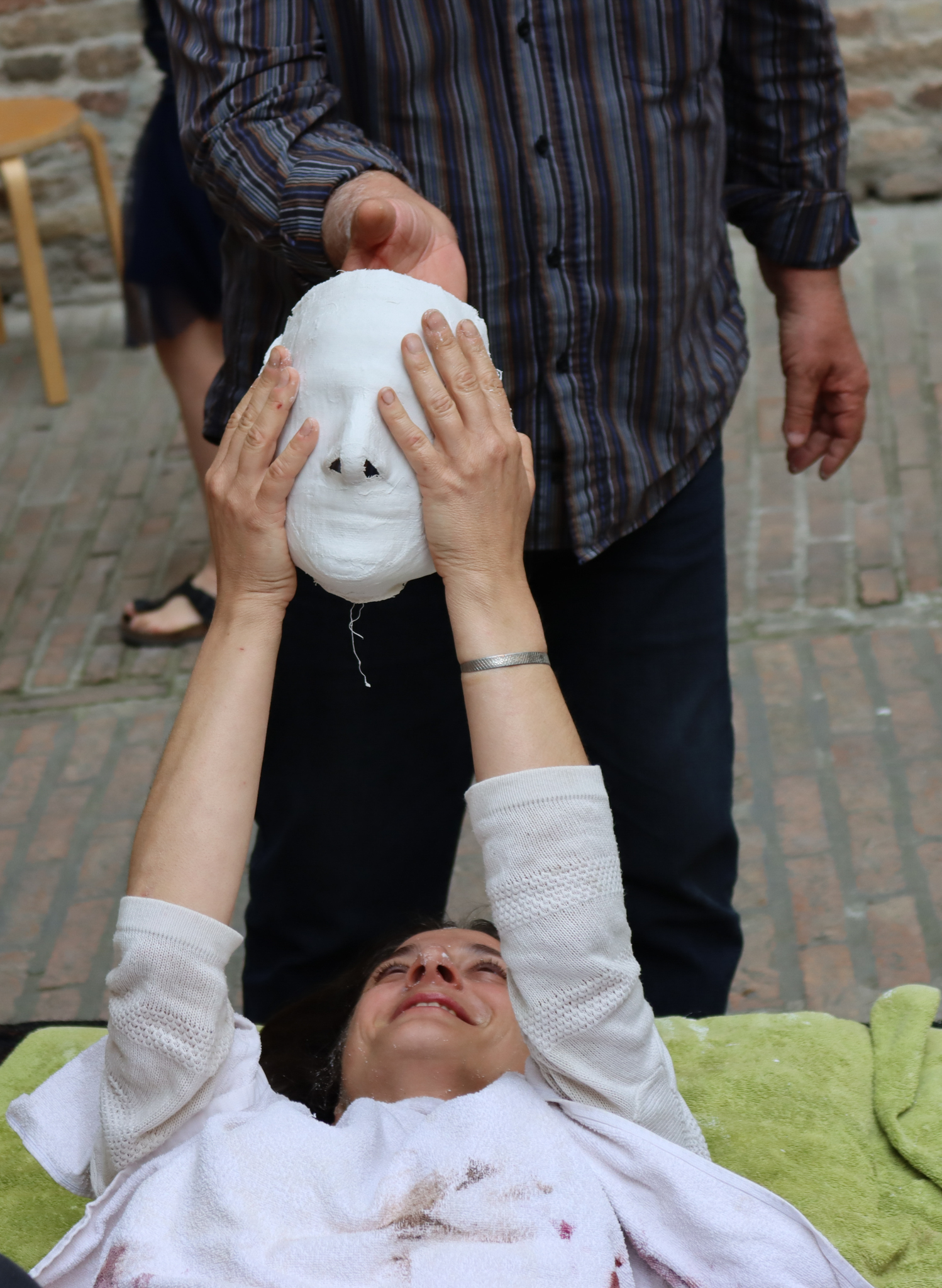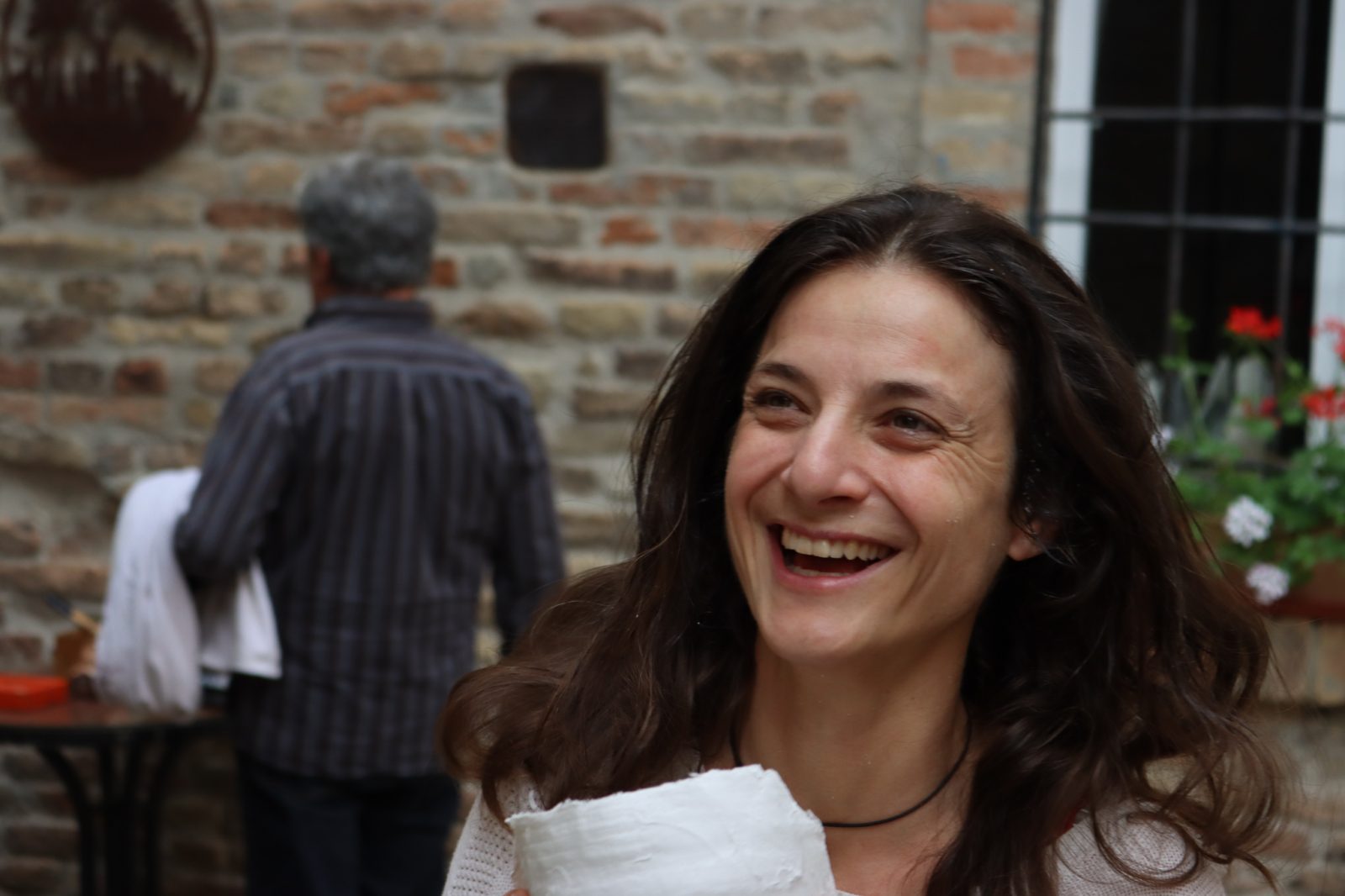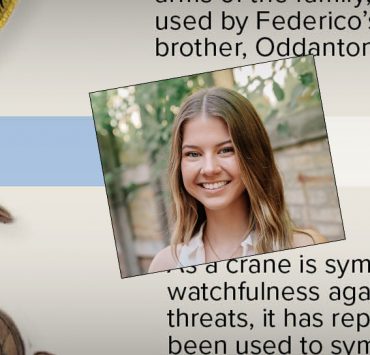It’s so funny reflecting on my time here in Urbino.…



 +8
+8 Revealing the Mask
Revealing the Mask
Revealing the Mask
Revealing the Mask
Revealing the Mask
Fa’Maschere keeps Commedia dell’Arte alive with a new take on traditional mask-making
URBINO, Italy—Drip, drip, drip… The sound of water hitting a tin pail as a pair of rough, stained hands wrings out a light brown piece of hide. A whiff of earthy, woodsy smell fills the air. A smile peeks up over the hands as they shape the wet leather.
Eyebrows, a sharp nose, and a mouth form on the hide, creating a face just like the ones hanging on every wall in the shop. The craftsman lifts the leather over his own face, revealing an expressive mask with the eyes of Federico Gargaliano, its maker, looking through.
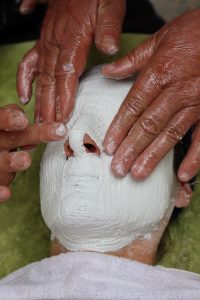
Gargaliano and his artistic partner Alessandra Ceccarelli make theatrical, artistic cuoio (leather) masks for private collectors and theater performers. Working out of their shop Fa’Maschere in Urbino, they have used their studies, personal performances, and mask-making knowledge to change the way that traditional masks are made and presented to audiences, specializing in the masks of Commedia dell’Arte.
Begun in mid-sixteenth-century Italy, Commedia dell’Arte is a loose, improvised style of theatrical performance that used distinct stock characters and emphasized acting in an ensemble and masks covering the faces of the ensemble. The stock characters created strict mask requirements for the mask makers, but with time, the framework loosened and allowed for the work Fa’Maschere creates to evolve as well.s
“The evolution of theatre today was important for Commedia dell’Arte,” said Michele Pagliaroni, artistic director of CTU Cesare Questa (Theatre Center of Urbino). “Today the art form is seen not only in traditional Commedia forms but also theatrical art and entertainment.”
“I love the predictability of the unpredictable,” said Gargagliano.
Gargagliano and Ceccarelli began their work with i Commedianti di Urbino (comedians of Urbino) where they started learning acrobatics, stilt walking, and other “Cirque du Soleil type movements,” said Gargagliano. After learning the basics, they began to design their products, which led to their current career path as professional Commedia dell’Arte leather mask makers.
Gargagliano said he appreciates how Commedia is always susceptible to change but at its core, remains the same. “I love the predictability of the unpredictable.”
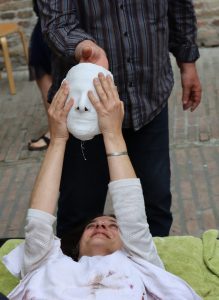
In 2003, Gargagliano and Ceccarelli met Giorgio De Marchi, an expert mascherano (mask maker) from Vicenza at the University of Urbino, and started learning all the basics of mask making. The pair became very serious about mask-making and started to know leather and how to work the material to shape it into their original creations. In 2007, Gargagliano and Ceccarelli parted from De Marchi and opened Fa’Maschere together. They named the shop after their names, combining “F” for Frederico and “A” for Alessandra, creating “fa,” the Italian word for “make.” The name almost literally translates to “making masks.”
Fa’Maschere masks are made from the typical wooden matrice (mask model), which are the wooden faces they store on the back wall shelf. From the wooden model base, the pair makes artistic decisions in changing the shape and color to make the masks completely their own. After creating the mask to the shape of the matrice, the pair then creates detailed eyebrows, sharp cheekbones, or even long pointy noses. Unless it is specially ordered, the team likes to focus on creating fantasy-themed masks, allowing them to make their creative features and unique artistic expression.
Gargagliano’s favorite mask to create is based on the stock character the Arlecchino (Harlequin) due to the artistic liberties he can take creating facial features because of the role the character plays. He creates sharp detail cuts on the light leather with his bright yellow knife to form the original shape, and the extra leather that falls off the side of the matrice doesn’t go to waste.
They have so many special materials and gadgets that make every mask absolutely unique and beautiful.”
Stained hands carefully cut and shape the scraps of leather into a cone shape, nailing the edges to the forehead of the mask. Gargagliano loves to use the extra leather to make horns on his arlecchino masks, adding that extra detail to create an even more expressive, new mask.
“They have so many special materials and gadgets that make every mask absolutely unique and beautiful,” said Giovanna Giusto, a friend and fellow artist on Via Valerio, who sometimes acts as a model for plaster masks. “They are handcrafted objects every time, even if the same mold is used.”
Gargagliano and Ceccarelli are appreciated by theatre-makers and artists in Urbino due to the novelty of their work. CTU director Pagliaroni appreciates their way of using the leather to create “different pictures of the same mask.”
“There is no typical day in the shop,” said Ceccarelli. Some days are dedicated solely to preparing the leather. Some are used to shape and mold the leather. Some days they teach classes to people of all ages, including children as young as five years old. No matter how much fun they have creating their masks and sharing their knowledge, the most exciting days for them are when they get to perform, as they did on a recent Saturday evening in June.
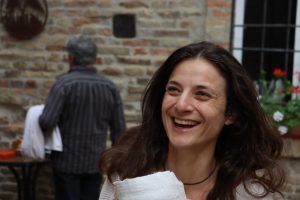
Bright colors of red, blue, and green float through the air, twirling in circles as Ceccarelli and her performance partner dance on stilts 10 feet in the air while rhythmically playing tambourine. Gargagliano and his performance partner keep to the rhythm while playing drums on stilts and walking through the streets of Schieti, performing for every resident of the town. Masks created by Fa’Maschere on every one of the performer’s faces, emphasize the tradition, but bring forth their artistic liberties with the painted colors of green and red over the dark brown hide.
The Italian tradition of Commedia dell’Arte stays alive with every beat of the drum and shake of the tambourine. Each step of the performers on stilts creates joy and fear in the crowd knowing they’ll be okay but bringing that feeling of unpredictability in everyone. Every performance is different.
Ceccarelli carefully places her tambourine over her head and mask and rests the instrument on her neck. She leans down, getting to the same level as an older man in the crowd, takes his sunglasses off his face, and puts them onto her mask—an improvised trick completely fitting the old tradition but making every performance new, just as the sixteenth century Commedia dell’Arte form intended.
“The sensation to be free, to be creative, and make something for the older generation, while also making it ours,” said Gargagliano. “This is why we do what we do, and we love every second of it.”
Translation of interviews and other language assistance by University of Urbino student Martina De Fillipo.
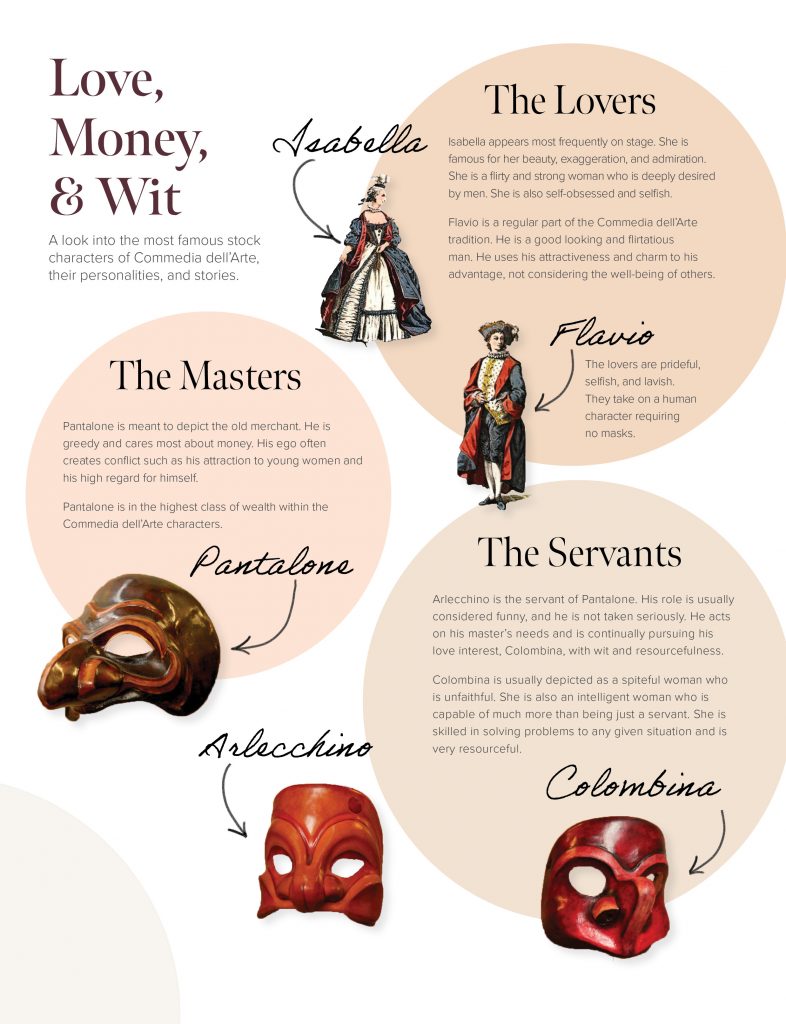
It’s so funny reflecting on my time here in Urbino. When I first came, I didn’t expect to learn so much, AND have the experiences of a lifetime in such a small amount of time. I have and always have been a theatre person, and adding my major was off a whim. After this summer, I can confidently say, I am so happy I added my second major. I have gotten to work with the most wonderful theatre makers, watch fantastic performances, and make lifelong friends. Taking photos of such a gorgeous city with people even more beautiful was so thrilling, and every snap of my camera brought me immense amounts of joy. This program has taught me that I love meeting new people and telling their stories. I love sharing those stories through writing and photography, and with the skills I have learned here from such wonderful mentors, I think I’ll be able to implement it in all the work I do in the future. I have always considered myself a theatre artist, but I think after this program, I will also consider myself a journalist too.

